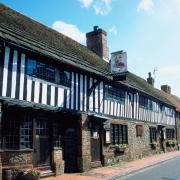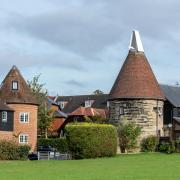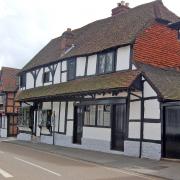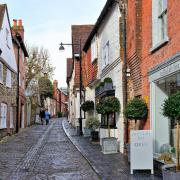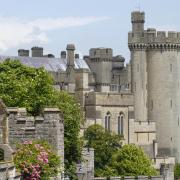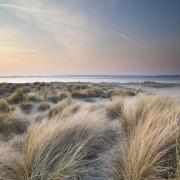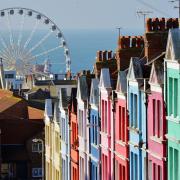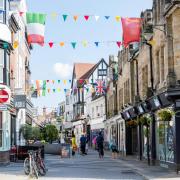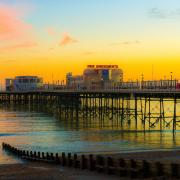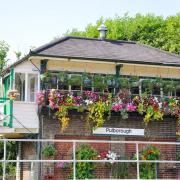Forty nuclear bunkers were built around Sussex in the 1960s. Now Cuckfield’s Royal Observer Corps post has been restored by enthusiasts to its full operating condition and is open to the public on three dates this summer. Sebastian Oake revisits a period when nuclear war was a real fear
In a field at the southern edge of the village of Cuckfield, close to the churchyard, some unusual concrete and metal objects rise discreetly from the ground. If you gave them a second glance, you might think the structures marked the site of a water storage tank or perhaps something to do with gas, electricity or telephones.
But this place has never had anything to do with providing modern utilities. Actually its role was to monitor their destruction because here lies an underground bunker designed to measure the impact of a nuclear weapons strike on Sussex. It’s not in use now and its original function perhaps seems rather unreal today but this bunker was once part of serious preparations for nuclear war.
And it wasn’t an anomaly. Across the UK about 1,500 were constructed, largely in the early 1960s, for the UK Warning and Monitoring Organisation. Forty were built here in Sussex. They were staffed by members of the Royal Observer Corps, part-time volunteers from local communities. In a time of war, they would have had an intensely sobering job to do – measuring the force of a nuclear burst, the direction of its centre and the amount of radioactive fall-out afterwards. The Cuckfield ROC monitoring post, together with others in the same cluster at Brighton and Lewes, would then have sent this information via direct phone links to group headquarters at Horsham, and from there to sector command, where it would have been used to draw up a picture of damage to help government and local authorities decide how best to organise civilian life.
The posts were not manned continuously but in periods of international tension, teams of three would be stationed at each one, waiting for the attack warning speaker on the wall to spit out the news everyone dreaded. And if it did, the personnel would likely need to stay underground for a considerable time.
The origins of the Royal Observer Corps go back to 1925 and during World War II, the corps performed a vital role in identifying and tracking enemy aircraft. In the mid-1950s, with Cold War tensions rising, it took on the additional task of monitoring the impact of nuclear attack. Observation posts were rebuilt underground, well-protected to resist bomb blasts. By the mid-1960s, radar technology had improved to the extent that the ROC was largely no longer needed for aircraft monitoring and posts focused entirely on the nuclear threat. This continued until 1991 when, with the Cold War judged to be at an end, posts were shut down and about 10,000 volunteers laid off.
Since then most monitoring posts have passed back into the hands of landowners and from there often into history. They are, as you might expect, generally impregnable and inaccessible, but if you could lift the heavy cast iron lid on the entrance shaft, you would find beneath evidence of a dark and horrifying undercurrent to what were, somewhat bizarrely, only recent times.
And at Cuckfield you actually can lift that lid – with a bit of help perhaps – and get a feel for how things were. This ROC post has been restored by enthusiasts to its full operating condition.
Ed Combes and Mark Russell are the people behind what has been a remarkable project. Ed explains they are both keen photographers interested in history but history with a rather unusual twist. “We belong to an organisation called Subterranea Britannica, which promotes the study of man-made underground spaces. We spend our weekends taking pictures of things like old coal mines, cellars, wells and air-raid shelters.” He also reveals that between them, they have visited a staggering 1,200 ROC posts.
Ten years ago they were doing a survey of bunkers to see how much their condition had changed since a previous survey carried out in the 1990s. “A lot were in a sorry state,” says Ed. “We were finding that, as time went on, they were increasingly being sealed with concrete or even demolished altogether. And when we were writing to landowners asking for permission to visit these sites, we began to realise there was very little knowledge of what the posts really were – many thought they were something to do with water companies.”
Concerned, Ed and Mark were motivated to try to save a bunker from further decay and they chose Cuckfield. “We found it to be in a very good, sound condition and it was also in a nice location. Additionally, it was one of the first ROC sites in the country. In 2008, we approached the parish council, who owned the land, to propose doing it up and taking it on for them. They said yes, with the only caveat being we had to take out insurance and open it to the public.”
Work got underway to get rid of debris and to repair and repaint, while junk shops and auction rooms were scoured to replace lost furniture, equipment, uniforms and even period paperwork. In the summer of 2009, Cuckfield ROC post had been fully returned to how it was in the mid-1980s and was ready for service once more, albeit this time for exploration and learning rather than national defence.
The Cuckfield bunker was built following a standard design. A small subterranean room, encased in 12-inch reinforced concrete, was accessed down a vertical shaft and furnished in Spartan manner with a bench-top, canvas chairs, two or three bunk beds and a cupboard for provisions. Electricity came from a heavy-duty battery, periodically charged by a portable petrol generator. Drinking water was stored in jerry cans. Food was in the form of service ration packs.
Each observation post had three main measuring devices. The bomb power indicator registered the pressure wave from a nuclear blast passing over an instrument on the surface, while the ground zero indicator photographed the fireball of an explosion and recorded its direction. The radiation meter recorded subsequent fall-out levels outside.
Operating an ROC post would have been a thankless task. “Conditions would have been grim,” says Ed. “There would have been three people working, eating and sleeping in a space no bigger than a small garage. There was no running water and there was just a basic chemical toilet. After a couple of days, it wouldn’t have been a great environment. And people might have had to stay there for weeks.”
So why were people prepared to volunteer to do the job? “It’s something I’ve often thought about,” says Ed. “It would have been a big ask for people to leave their family and go into a hole in the ground and wait for the radiation to clear. They would have sat there thinking about their loved ones and wondering what sort of world they would be re-entering afterwards. But people no doubt had a sense of duty and felt they had a part to play.
“People I’ve met from the ROC also talk about a tremendous sense of camaraderie in the corps. They made friends for life.”
Ed reveals that he himself has spent the night in the bunker at Cuckfield, “just to see what it was like”. He admits: “It wasn’t the best night I’ve had. I had a heater with me but I was still cold.”
www.facebook.com/pg/cuckfieldnuclearbunker or www.thetimechamber.co.uk








